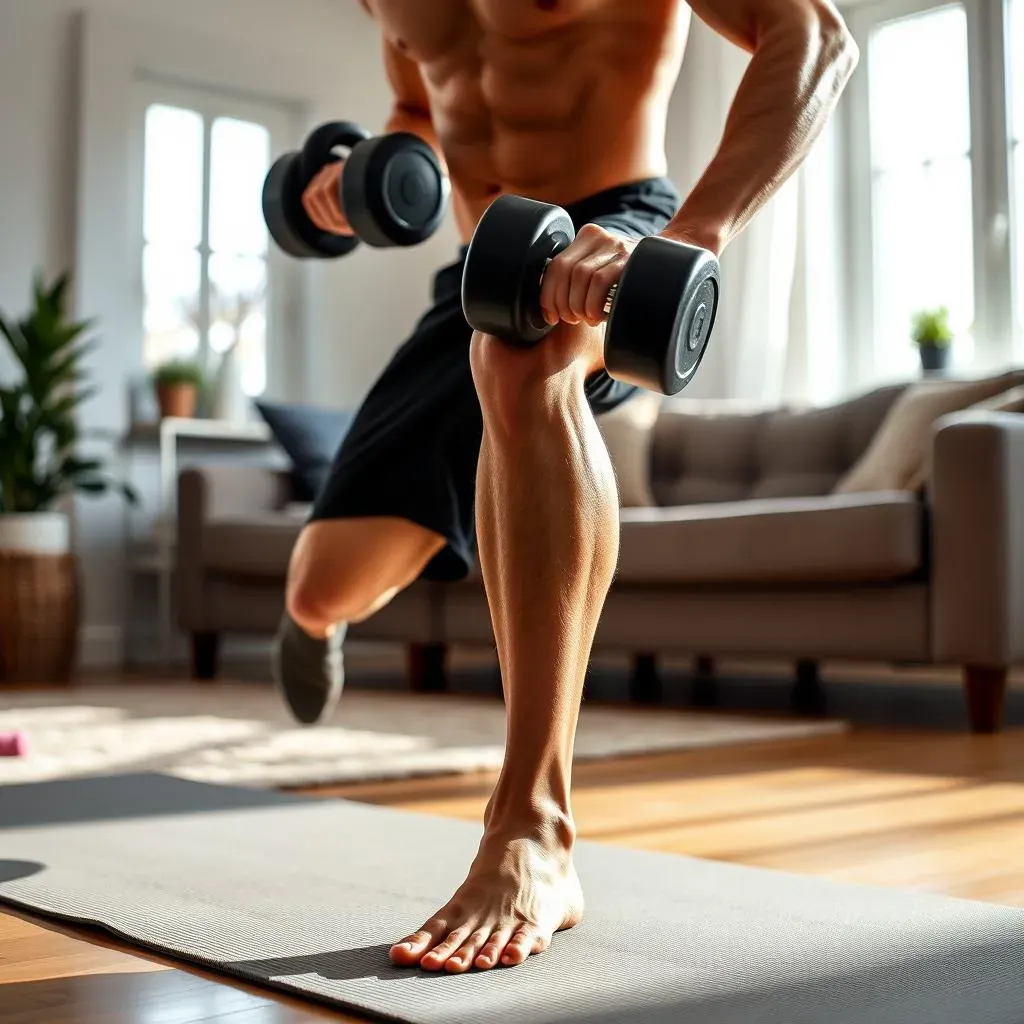Table of Contents
Tired of skipping leg day because you can't make it to the gym? You're not alone. Many of us struggle to find time or the motivation for a proper leg workout. But what if you could build incredible lower body strength right in your living room? That's where the magic of dumbbell leg workouts at home comes in. This guide will show you how to transform your legs into pillars of strength using nothing more than a few dumbbells. We'll start by uncovering the real benefits of leg training with dumbbells, moving on to the most effective exercises you can do. Then, we'll discuss how to choose the right weights and how to progress safely. And finally, I'll highlight the most common mistakes people make so you can avoid them and get the best results from your leg workouts at home for strength. So, ditch the excuses and let's get those legs working!
Why Leg Day with Dumbbells is a Game Changer
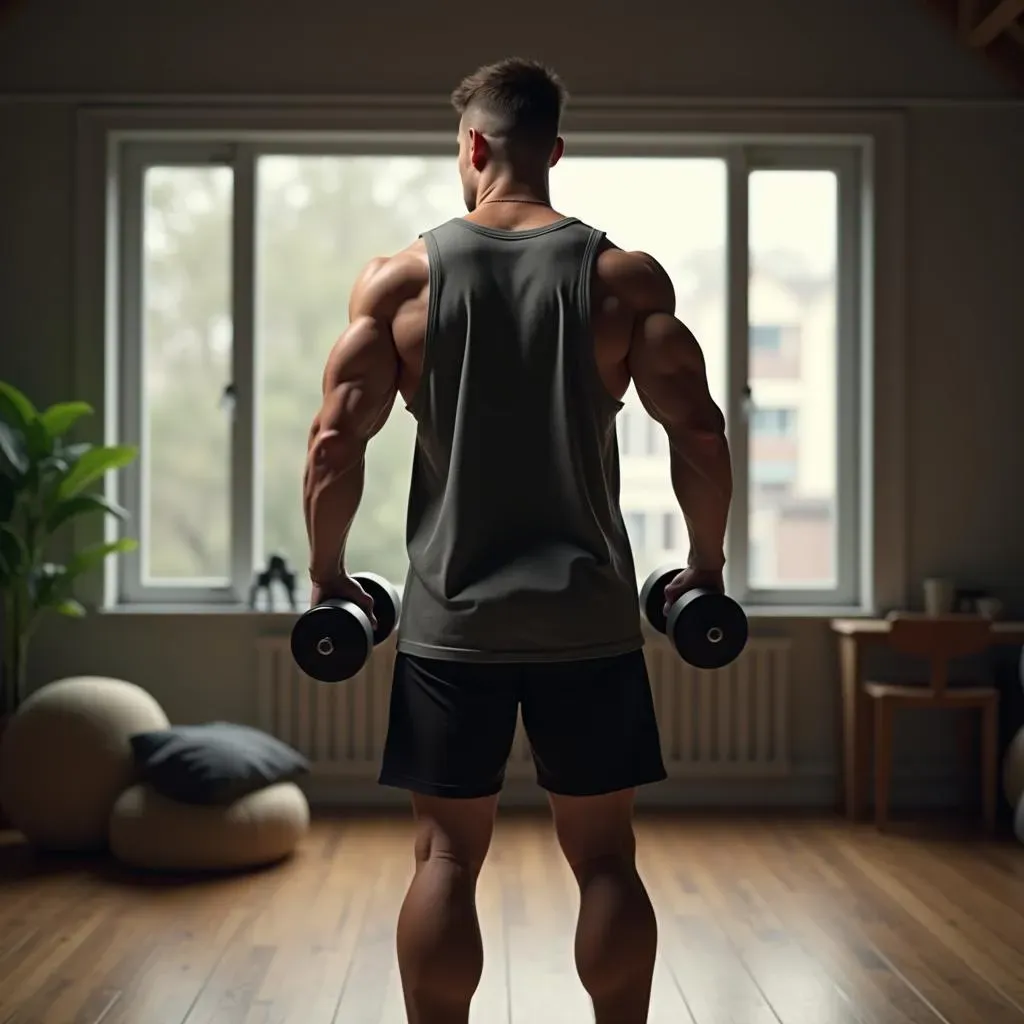
Why Leg Day with Dumbbells is a Game Changer
Okay, let's talk about why skipping leg day is a crime against your body, and why dumbbells are your best friends for fixing it, especially at home. Seriously, think about it. Your legs are the foundation for pretty much everything you do. They help you walk, jump, and even just stand up straight. Ignoring them is like building a house on a shaky foundation, you’re going to have problems later. Now, you might be thinking, "Yeah, yeah, I get it, legs are important." But here's the real kicker: dumbbells add a whole new level of awesome to your leg workouts. They’re not just for biceps curls, you know! They let you target specific muscles, increase the intensity, and make your home workouts feel like a real gym session. Plus, you can adjust the weight as you get stronger, which means you never stop progressing. It's like leveling up in a video game, except the prize is strong, powerful legs.
Top Dumbbell Exercises for Leg Strength at Home
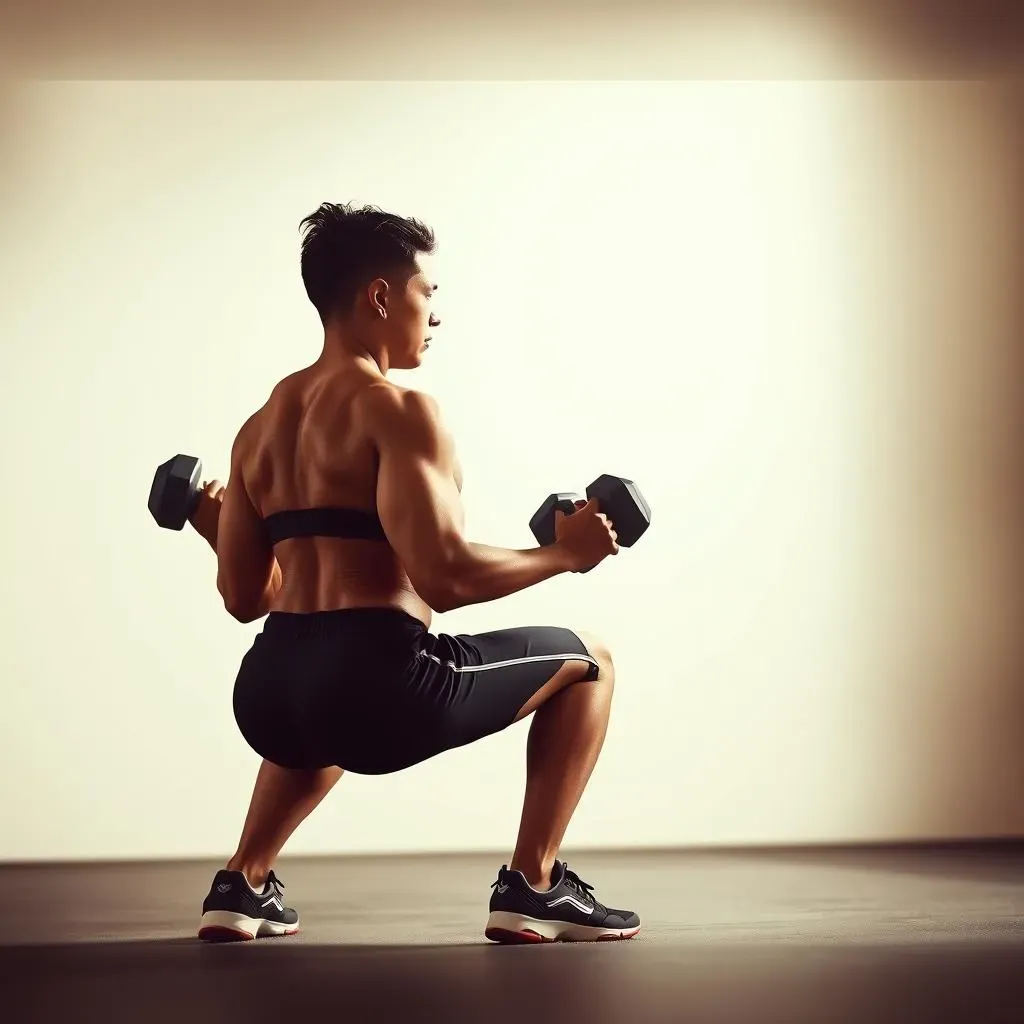
Top Dumbbell Exercises for Leg Strength at Home
The Powerhouse: Squats and Lunges
Alright, let's get into the meat of it. If you're serious about building leg strength at home, you need to master squats and lunges. These aren't just basic moves; they're the bread and butter of any good leg workout. Squats work your quads, glutes, and hamstrings all at once, making them a super efficient exercise. Think of them like the king of leg exercises. Now, lunges are like the queen, targeting each leg individually to improve balance and coordination, while also strengthening all the same muscles. You can do regular forward lunges, reverse lunges, or even side lunges for a more well-rounded workout. Adding dumbbells to these exercises will make them even more effective, forcing your muscles to work harder to stabilize and lift the weight. I remember the first time I tried lunges with dumbbells, my legs were shaking like a leaf, but after a few weeks, I felt like I could conquer the world!
These exercises are not just about lifting weights; they are about control and form. If you are not doing it right, you are not working your muscles in the most efficient way. Always focus on your form first. It’s better to do fewer reps with the right form than a bunch of reps with bad form. Trust me, your body will thank you later. When squatting, imagine you are sitting down on a chair, keeping your back straight and your core engaged. For lunges, make sure your front knee doesn’t go over your toes, and your back knee almost touches the ground. It is like a dance, smooth and controlled movements.
Hamstring Heroes: Deadlifts and Variations
Now, let’s talk about the often-neglected heroes of leg day: the hamstrings. These muscles run down the back of your thighs and are crucial for power and stability. Dumbbell Romanian deadlifts (RDLs) are a fantastic way to target them. Unlike regular deadlifts, RDLs focus more on the hamstrings and glutes, and less on the lower back. I know it sounds intimidating, but trust me, once you get the form down, you'll feel the burn like never before. It's like giving your hamstrings a wake-up call, telling them, "Hey, it’s time to work!". The key here is to keep your back straight and hinge at your hips, feeling a stretch in your hamstrings as you lower the dumbbells. Think of it as a hinge, not a bend.
Another great exercise is the single-leg RDL, which challenges your balance and coordination while working those hamstrings. It’s like trying to balance on a tightrope while carrying weights. It is tricky at first, but with practice, it becomes much easier. And let’s not forget about good old hamstring curls. You can do these lying on your stomach with dumbbells between your feet. These exercises will make sure that you are not just focusing on the front of your legs, but the back too. It is all about balance, you know? A well rounded leg workout should hit all the angles, not just the ones you see in the mirror.
Exercise | Muscles Targeted | How to do it |
|---|---|---|
Squats | Quads, Glutes, Hamstrings | Stand with feet shoulder-width apart, lower your hips as if sitting in a chair. |
Lunges | Quads, Glutes, Hamstrings | Step forward, lower your back knee towards the ground, and push back up. |
Dumbbell Romanian Deadlifts (RDLs) | Hamstrings, Glutes | Hinge at your hips, keeping your back straight, and lower dumbbells towards the ground. |
Single-Leg RDLs | Hamstrings, Glutes, Balance | Same as RDLs, but on one leg at a time, while maintaining balance. |
How to Choose the Right Dumbbells and Progress Safely
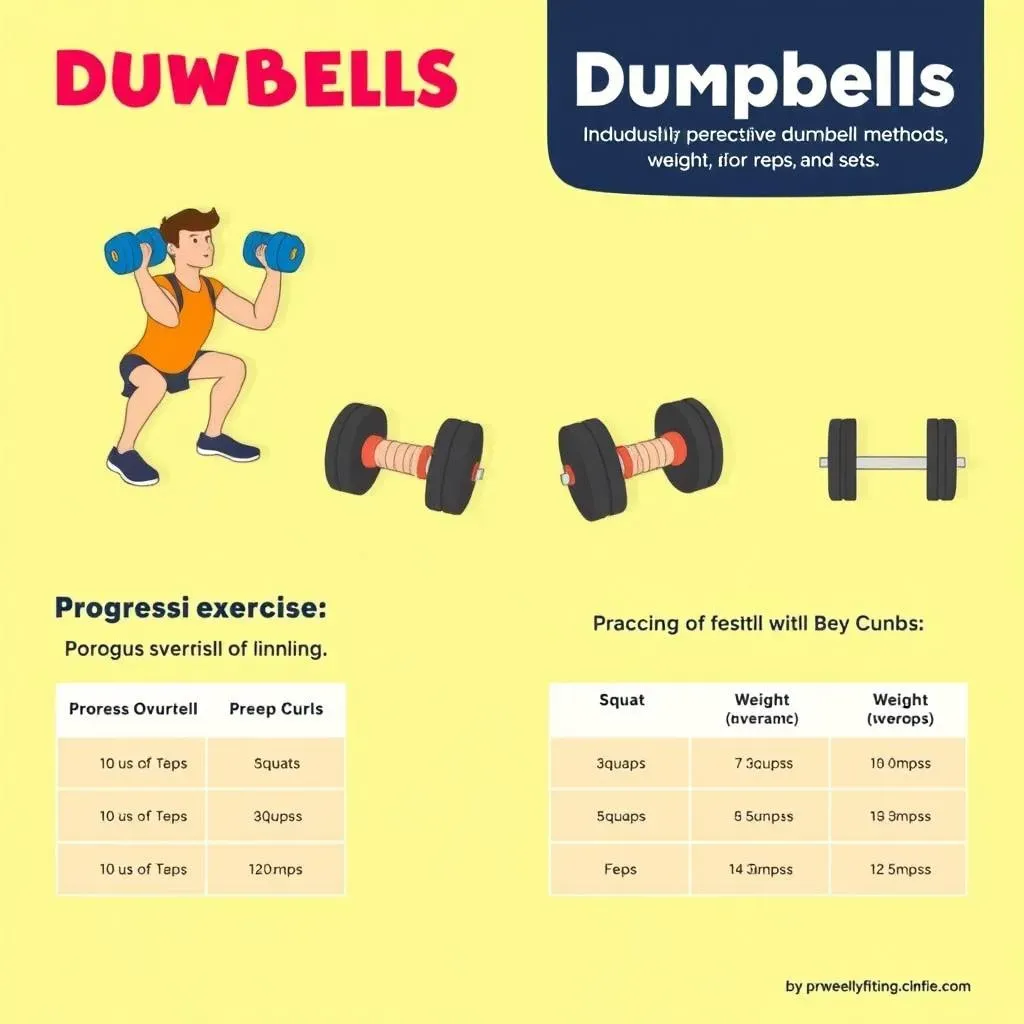
How to Choose the Right Dumbbells and Progress Safely
Alright, so you're ready to grab some dumbbells and start building those legs. But hold up, not so fast! Choosing the right weight is crucial for getting the most out of your workouts and avoiding injury. It's not about lifting the heaviest thing you can find; it's about finding a weight that challenges you while allowing you to maintain proper form. Think of it like Goldilocks and the three bears – you want a weight that's not too light, not too heavy, but just right. If you're new to dumbbell training, start with lighter weights and focus on mastering the form. You can always increase the weight as you get stronger. It's better to start slow and steady than to go too heavy and risk hurting yourself. Remember, slow and steady wins the race, or in this case, builds killer legs.
Now, let's talk about progressive overload. This is a fancy term for gradually increasing the demands on your muscles over time. It's the secret sauce to making continuous gains. You can do this by increasing the weight, the reps, or the sets. For example, if you're doing squats with 10 pounds and you can easily do 12 reps, try increasing the weight to 12 pounds or doing 15 reps. It’s like leveling up in a video game; you have to keep challenging yourself to get better. Don’t be afraid to push yourself a little harder each time, but always listen to your body and don't push through pain. Remember, consistency is key, and with time and patience, you'll be lifting heavier than you ever thought possible.
Progression Method | Description | Example |
|---|---|---|
Increase Weight | Use heavier dumbbells | Move from 10lb dumbbells to 12lb dumbbells |
Increase Reps | Do more repetitions with the same weight | Go from 10 reps to 12 reps with 10lb dumbbells |
Increase Sets | Add another set of each exercise | Go from 3 sets of squats to 4 sets |
Common Mistakes and How to Avoid Them in Leg Workouts
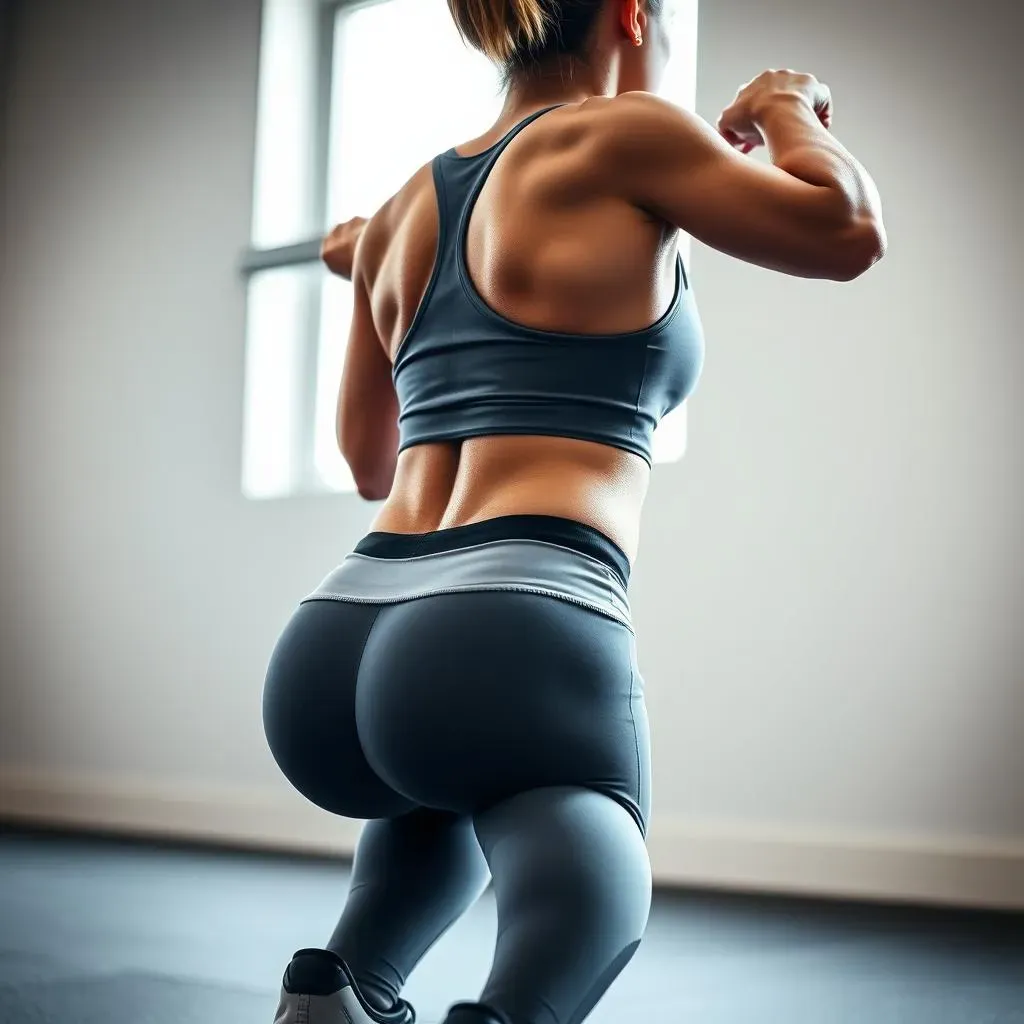
Common Mistakes and How to Avoid Them in Leg Workouts
Form Over Everything: The Importance of Proper Technique
Okay, let's get real for a second. You could be lifting the heaviest dumbbells in your neighborhood, but if your form is trash, you're not doing yourself any favors. Seriously, I've seen people in the gym doing squats that look like they're trying to invent a new dance move, and not a good one. The most common mistake? Not going deep enough in squats or lunges. You need to hit that sweet spot where your thighs are parallel to the ground, or even a little lower, to really engage those muscles. Another biggie is letting your knees cave in during squats or lunges. This puts a ton of pressure on your joints and can lead to injuries. Imagine your knees are like train tracks, they should always stay aligned with your feet. It’s like trying to drive a car with misaligned wheels, you are not going to get anywhere fast.
And when it comes to Romanian deadlifts, people often round their backs, which is a huge no-no. You want to keep your back straight and your core tight throughout the entire movement. It’s like trying to balance a stack of books, you need a solid base. If you are not doing it right, you are not working your muscles in the most efficient way, and you might even hurt yourself. Think of it this way: proper form is like the secret code to unlock the full potential of your workouts. It's better to do fewer reps with the right form than a bunch of reps with bad form. Trust me, your body will thank you later.
Rushing the Process and Ignoring Your Body
Alright, so you're pumped up, ready to crush those leg workouts, and that's fantastic! But sometimes, that enthusiasm can lead us to rush things, which is never a good idea. One huge mistake people make is trying to progress too quickly. You need to give your body time to adapt and build strength. It's not a race; it’s a marathon. Don't jump from 10 pounds to 20 pounds if you are still struggling with the 10 pounds with good form. It’s like trying to run before you can walk; it’s just not going to work out well. Another common pitfall is not listening to your body. If you are feeling pain, it's your body telling you to stop. Don’t try to be a hero and push through it. It is not a badge of honor to workout with pain.
Ignoring pain can lead to serious injuries that will sideline you for weeks, or even months. Trust me, I’ve been there, and it is not fun. Rest and recovery are just as important as the workouts themselves. Your muscles need time to rebuild and get stronger. Think of it like charging your phone; you can’t expect it to work all the time if you never plug it in. So, be patient, be consistent, and most importantly, listen to your body. It knows what it is doing. It’s all about the long game, not about instant gratification.
Mistake | How to Fix It |
|---|---|
Not going deep enough in squats/lunges | Lower until thighs are parallel to the ground or lower |
Knees caving in | Keep knees aligned with your feet |
Rounding back in deadlifts | Keep back straight and core tight |
Progressing too quickly | Gradually increase weight, reps, or sets |
Ignoring pain | Stop and rest, if you feel pain |
